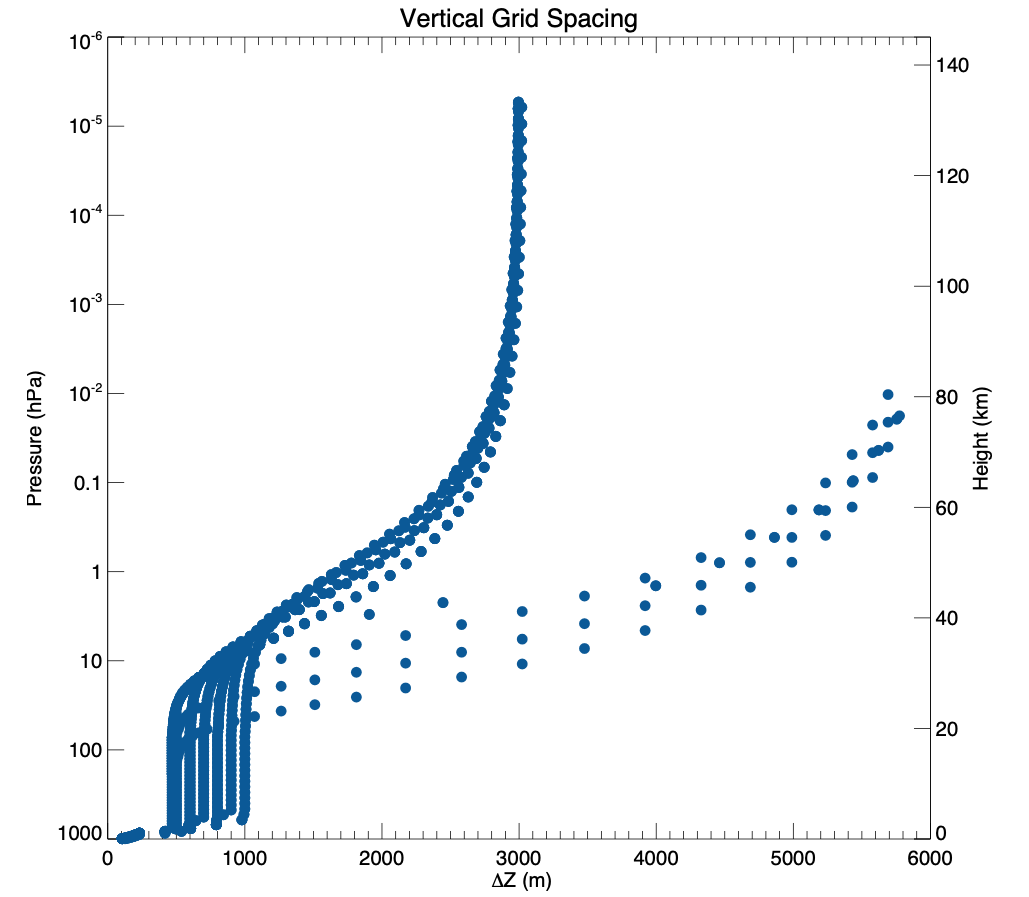Vertical grids
It is intended that the next generation of CAM will have enhanced vertical resolution and a higher model top (although not as high as its high-top counterpart WACCM). AMWG researchers are currently testing new vertical grids for CAM to achieve a balance between model fidelity and computational cost. There are many motivations to enhance the vertical resolution of CAM such as incorporation of a well represented stratosphere, which is thought to be important for predictability and the representation of various aspects of climate variability and change; improved representation of many features in the boundary layer such as clouds and vertical profiles of temperature and humidity; potential benefits of a more appropriate vertical resolution for higher horizontal resolution applications.
It is planned that there will be two new versions of CAM:
- One with a model lid height around 80km/0.01hPa
- The other with a model lid height that is similar to the current 32 level CAM at around 40km/3hPa
The 80km model will be the "workhorse" configuration used for applications like CMIP, while the 40km model provides a cheaper counterpart that can be used for applications such as tropospheric tuning or experiments where the stratosphere is not considered to be important.
Configuration and testing of this new vertical resolution is proceeding in two phases:
- Phase 1: Testing and configuration of free tropospheric and stratospheric grids for the 80km and 40km models
- Phase 2: Configuration of the new planetary boundary layer resolution within the grid chosen from phase 1
Results
- October 28, 2020: Phase 1 is well underway and phase 2 will begin in the near future. View results from Phase 1
